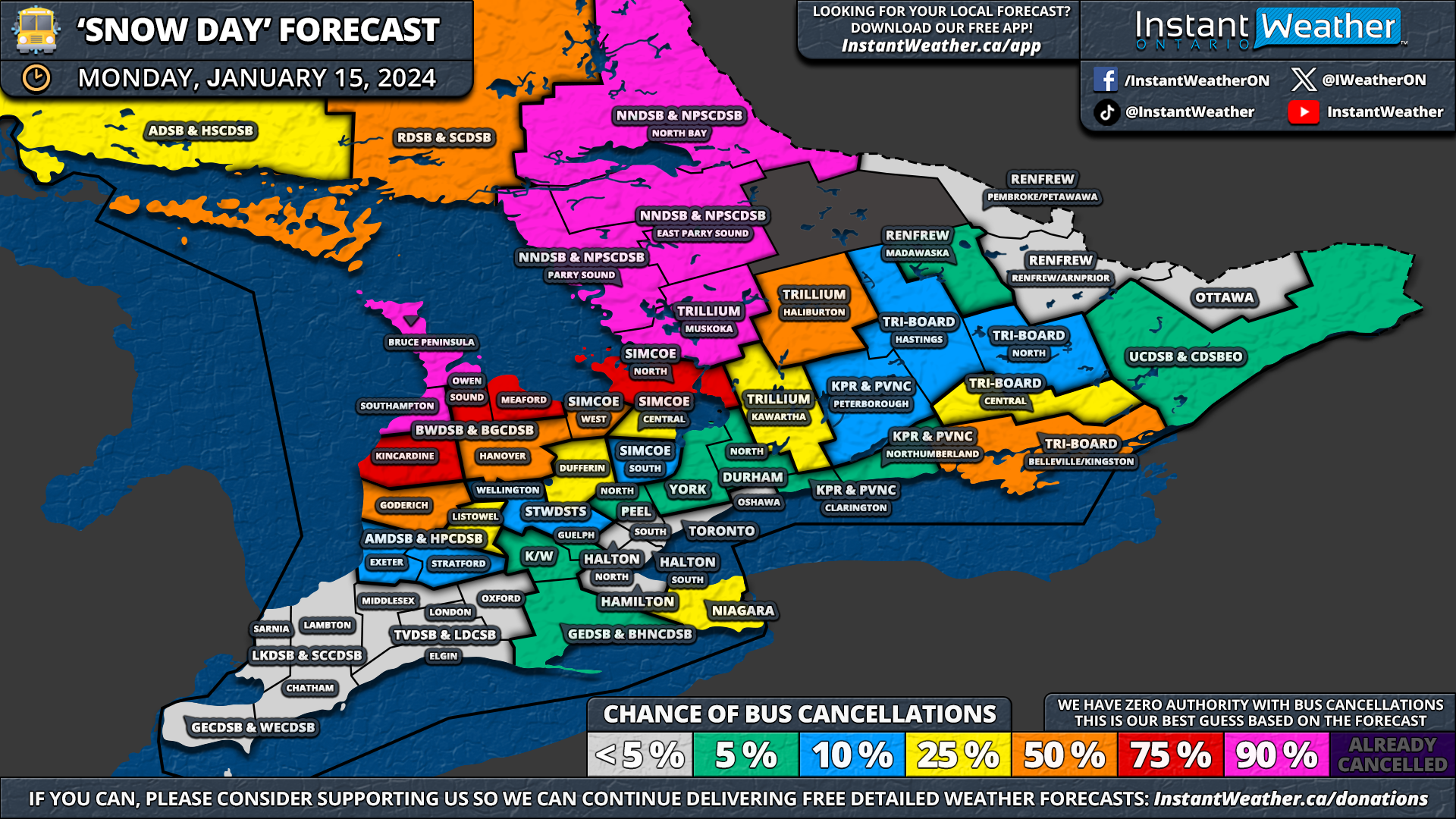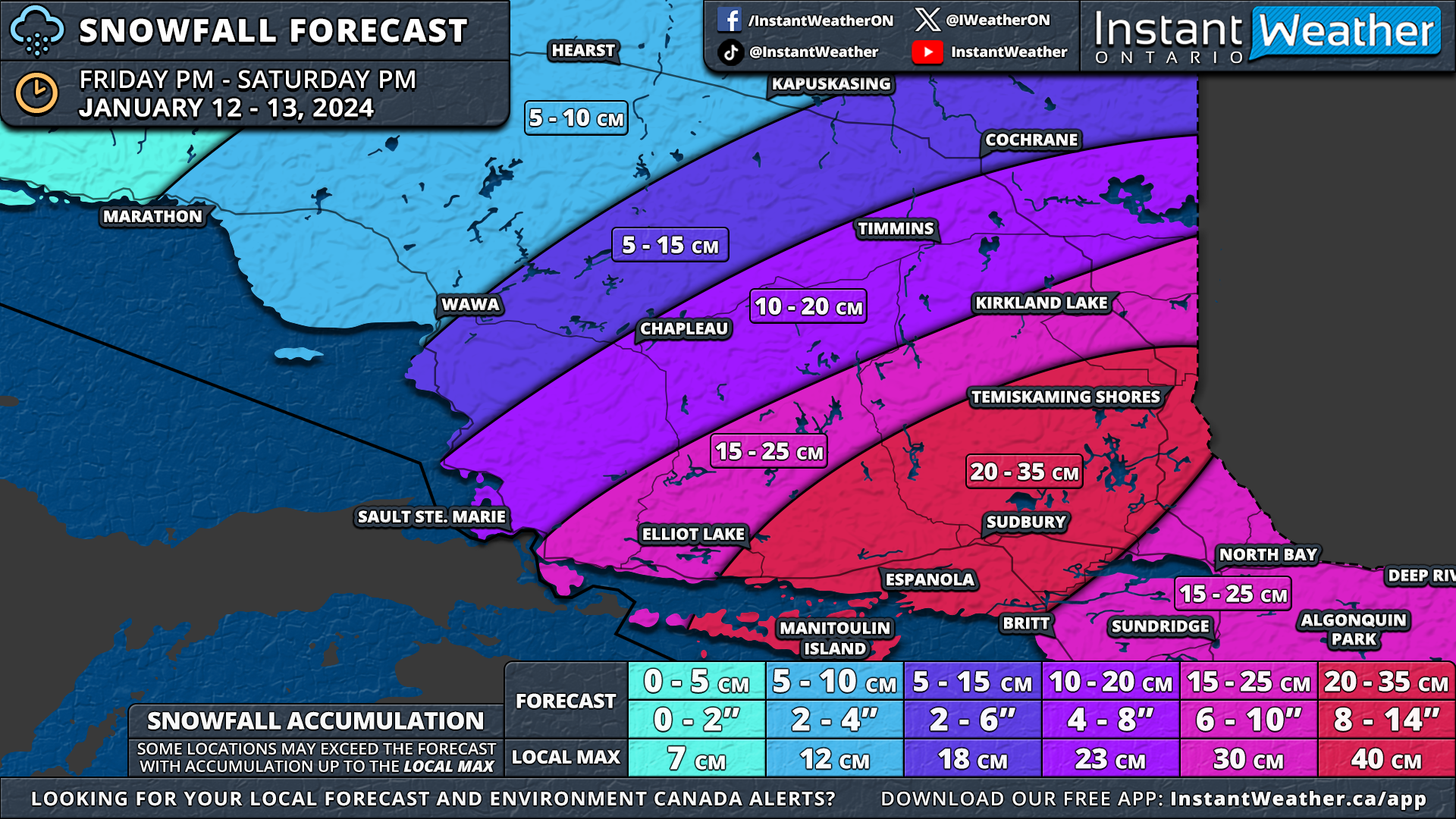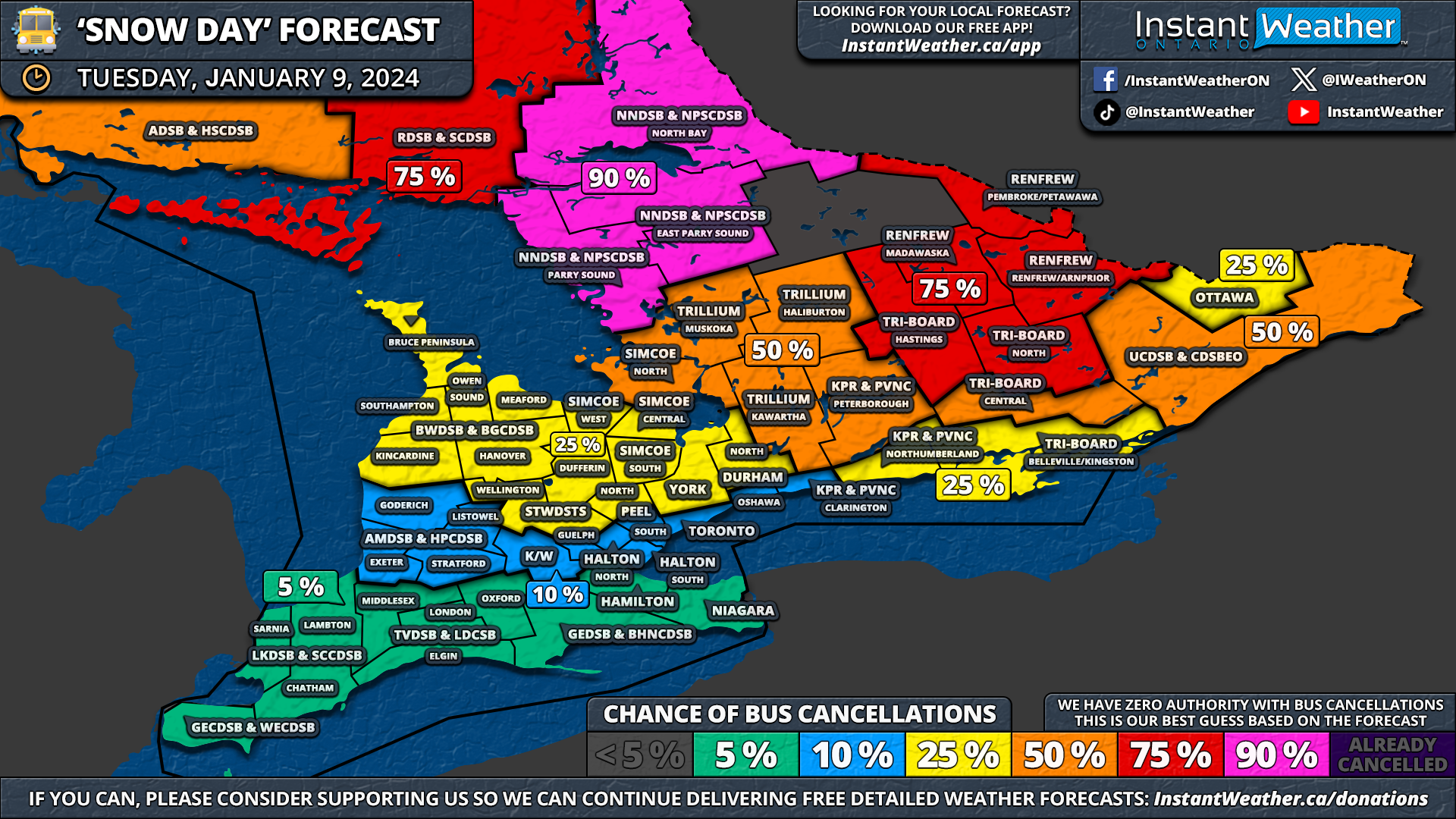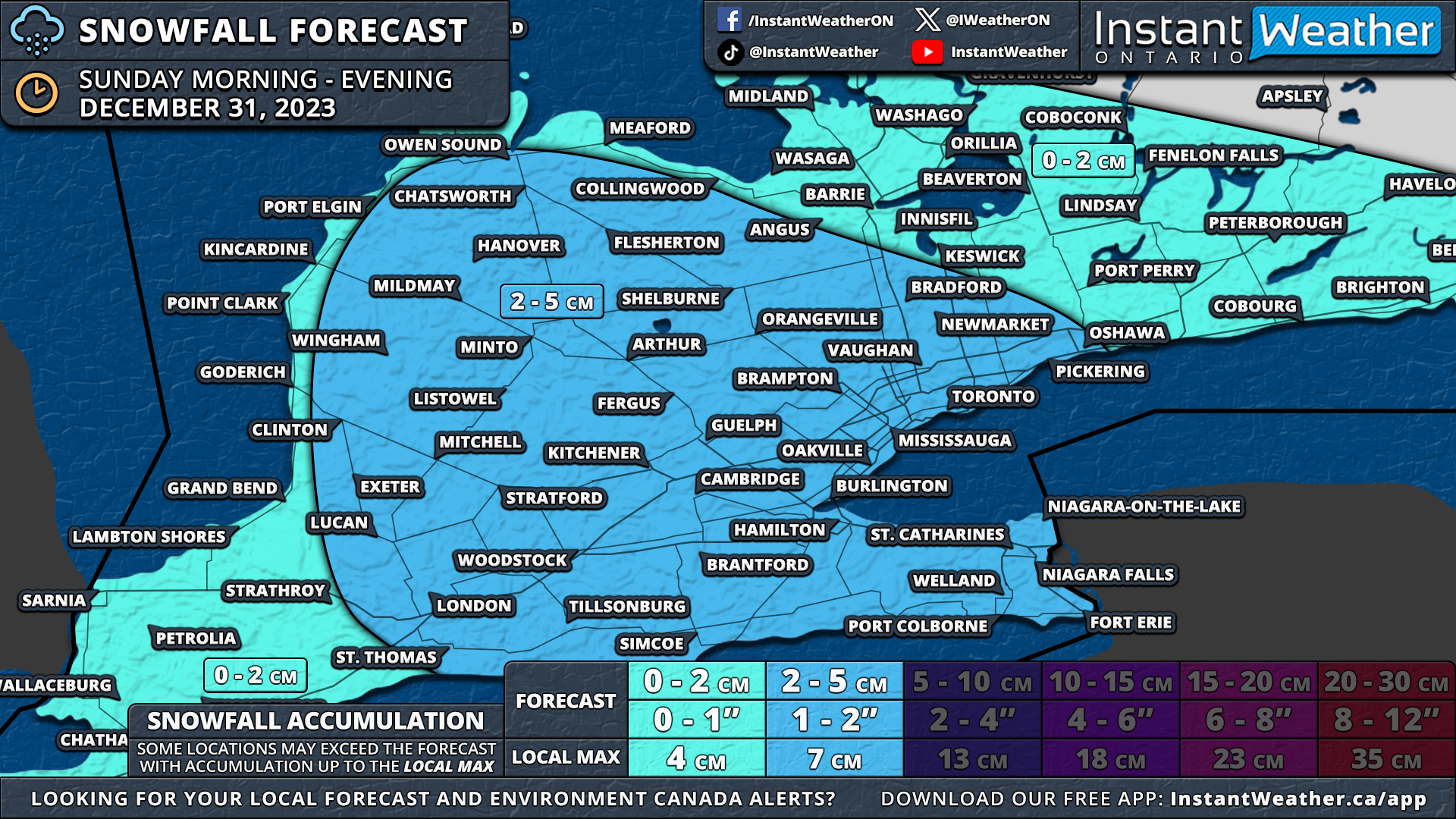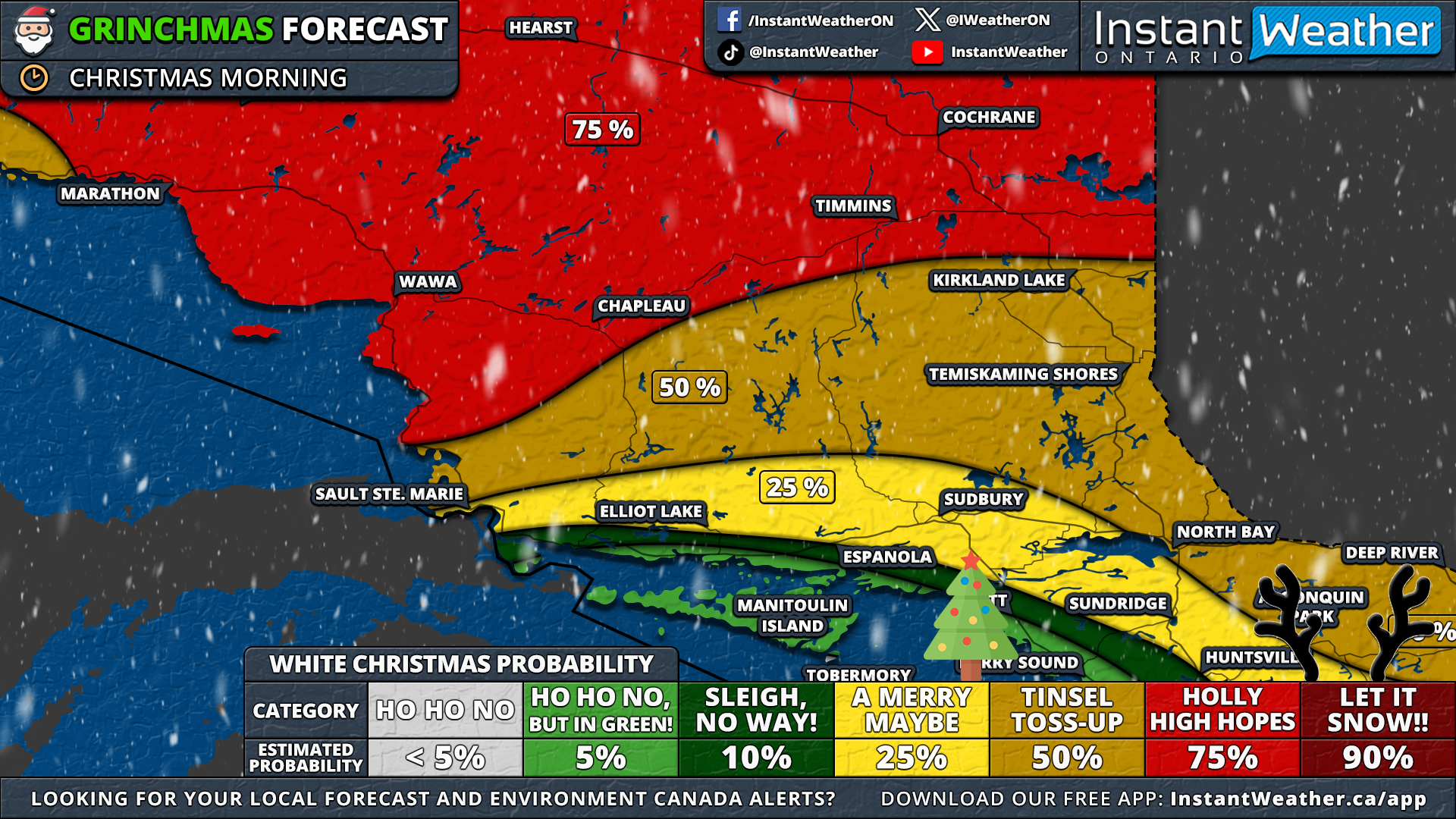Snow Squalls Return to Southern Ontario’s Snowbelt This Weekend With Up to 25-50cm Possible
/While the lake effect machine has settled down somewhat after intense squalls buried some areas under more than 100cm of snow this week, the threat of snow squalls is expected to return starting late Friday afternoon.
A weak system that tracked just south of the Great Lakes brought flurries and light snow to areas around Lake Erie earlier on Friday. As this system moves away, another surge of cold Arctic air is set to sweep across Southern Ontario later in the day.
With winds aligning in a predominantly north-to-northwesterly direction starting this afternoon, snow squalls are anticipated to redevelop off Lake Huron and Georgian Bay.
However, the focus of this lake effect snow will shift from earlier this week when the heaviest bands were east of Lake Huron and Georgian Bay. This time, regions to the south and southwest of these lakes, including the Sarnia to London corridor and the Meaford and Collingwood area, will be most affected.
By Sunday, when the lake effect snow is expected to move out, local accumulations could reach upwards of 25cm in the hardest-hit regions. Depending on the squalls' intensity and whether they shift during the next 24-36 hours, some pockets may even see close to 40-50cm.
We've already seen the snow squalls forming over Lake Huron as they initially reached into the Sarnia region and are now shifting eastward with the changing wind direction to more NNW.
By the dinner hour, these squalls should have settled around the Lambton Shores, Strathroy, and Grand Bend areas. This intense band is expected to stay mostly stationary through the evening and into the night.
As a result, travel between Sarnia and London will likely be hazardous starting this evening due to rapid snow accumulation and near-zero visibility.
This evening will also bring some disorganized lake-effect snow along the southern shoreline of Georgian Bay, affecting areas such as Owen Sound, Meaford, Flesherton, and Collingwood. The most intense snowfall rates are forecasted for the higher elevations southwest of Collingwood, including the Blue Mountains.
As Saturday morning arrives, the Lake Huron squall is projected to shift slightly eastward as the winds become more westerly, pushing the heaviest snow east of Grand Bend and towards the Lucan, St. Marys, and potentially London areas.
The Georgian Bay lake effect snow is also expected to push eastward into the Angus, Wasaga Beach, and Shelburne areas.
These regions will continue to experience lake-effect snow throughout Saturday and into Sunday. However, models suggest that the intensity of the bands should gradually wane by late Saturday, which would help limit total accumulations.
By Sunday morning, we anticipate the lake effect snow will diminish as winds shift to a less favourable direction for squalls.
Forecasting the exact snowfall accumulation for a specific location in a lake-effect snow event is extremely challenging. This is because of the highly localized nature of snow bands, which can lead to significant variance in totals even over short distances.
Therefore, you may notice our forecast shows significantly more snow than your weather app (including our own app). App-based forecasts often struggle with lake effect snow events due to their localized nature and reliance on data focused on larger macro-level weather events. This results in a failure to accurately capture the squalls, which operate at a micro-level, leading to intense snowfall totals.
Our forecast may still be off if the wind direction varies slightly from what the models predict, causing the snow squall band to form further north or south. That's why our forecasts use broader zones to account for this variability, meaning not everyone within these zones will see the significant totals. Essentially, we're indicating that a location within this area could see the forecasted amount.
Current predictions indicate the highest snowfall totals from this event will be found between Lambton Shores and Grand Bend. Models are not in complete agreement on where this narrow band will establish itself and persist over a specific area. Somewhere in this region has the potential to see anywhere from 25 to 50cm, with over 50cm not being out of the question.
The snowfall gradient is quite steep, meaning totals will decrease rapidly outside this core zone. Strathroy could see approximately 15-30cm, while Lucan may receive about 10-20cm. Yet again, locally higher amounts cannot be ruled out.
The City of London's forecast is somewhat uncertain, depending on the inland reach of the snow squall on Saturday. It could remain closer to the shoreline, resulting in about 5cm of snow for the city, or it could extend further inland, bringing potentially 10-15cm or more, especially to the northern and northwestern parts of London.
Approximately 5-15cm of snow is expected along the rest of the Lake Huron shoreline, including Kincardine, Goderich, and south through St. Thomas. Areas in Southwestern Ontario, such as Sarnia and Chatham, should see less than 5cm.
The snowfall totals south of Georgian Bay are expected to be less than those from Lake Huron, due to the lake effect snow being more disorganized. Nevertheless, we could see 15-30cm of snow in the higher elevations, such as the Blue Mountains south of Collingwood and Meaford.
Near the shoreline, the Collingwood area can expect around 10 to 20cm of snow. Further inland, including Owen Sound, Chatsworth, Flesherton, Angus, and Wasaga Beach, accumulations of 5 to 15cm are possible.
The City of Barrie is not likely to see much from this round of lake effect snow, with an expected 2-5cm. The rest of Southern Ontario can anticipate sporadic lake effect flurries throughout the weekend, which may total a few centimetres.
Rapid whiteout conditions on the roads are still possible, so even if significant accumulations aren't expected, it's important to drive according to the conditions.













